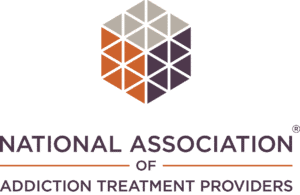Meditation for Relapse Prevention

The path to recovery is a courageous and transformative journey. It requires determination, resilience, and often a comprehensive set of tools to navigate the challenges that come with overcoming addiction or destructive habits. One such powerful tool is the practice of meditation. Meditation not only deepens self-awareness and inner peace but can also be a formidable ally in relapse prevention. In this article, we explore how the practice of meditation can support individuals in maintaining sobriety, fostering emotional well-being, and fostering a strong foundation for lasting recovery.
The Foundations of Relapse Prevention
Before diving into the transformative potential of meditation, it is essential to understand the foundations of relapse prevention. Relapse occurs when an individual returns to a previously destructive behavior or substance use. To prevent relapse, it is crucial to address various aspects that contribute to its occurrence, including physical, emotional, and environmental triggers. By cultivating effective coping mechanisms, individuals can minimize the risk of relapse and build a sustainable foundation for recovery.
The Profound Impact of Meditation
Meditation has been practiced for thousands of years across various cultures for its remarkable therapeutic benefits. When integrated into a relapse prevention strategy, meditation can significantly enhance an individual’s ability to navigate cravings, stress, and emotional triggers, thereby reducing the likelihood of relapse. By fostering a strong mind-body connection, meditation equips practitioners with invaluable tools to develop inner calm, self-awareness, and emotional resilience.
Here are some key ways meditation can empower individuals in their journey to relapse prevention:
Emotional Regulation and Self-Awareness
- Meditation cultivates emotional regulation by promoting self-awareness and mindfulness.
- By engaging in regular meditation practice, individuals gain insight into their emotional landscape, learning to recognize and navigate triggers effectively.
Alleviation of Stress and Anxiety
- The practice of meditation activates the body’s relaxation response, reducing stress and anxiety levels.
- By embracing meditation as a coping mechanism, individuals can find solace in the present moment, untangling themselves from the overwhelming grip of stress.
Increased Resilience and Coping Skills
- Through the practice of meditation, individuals develop resilience, enabling them to remain composed in the face of adversities.
- Meditation equips practitioners with effective coping skills, allowing them to respond rather than react to challenging situations, thus reducing the vulnerability to relapse triggers.
Heightened Focus and Cognitive Clarity
- Regular meditation practice improves cognitive function and attention span, enhancing focus and decision-making abilities.
- By sharpening mental acuity, individuals can better evaluate potential risks and make informed choices, minimizing the chances of relapse.
Enhancing Connection and Social Support
- Meditation fosters a sense of inner connectedness, leading to enhanced relationships and supportive networks.
- By cultivating compassion and empathy through meditation, individuals strengthen their support systems, making them more resilient and less susceptible to isolation-induced relapse triggers.
FAQs about Meditation for Relapse Prevention
Is meditation suitable for everyone in recovery?
Yes, meditation can be beneficial for individuals in all stages of recovery. It is important to find a meditation style that resonates with your preferences and needs.
How often should I practice meditation for optimal results?
Consistency is key. It is recommended to practice meditation for at least 10-20 minutes daily. However, any amount of regular practice can contribute to the desired benefits.
Can meditation replace other relapse prevention strategies?
No, meditation is most effective when used in conjunction with other evidence-based relapse prevention strategies, such as therapy, support groups, and healthy lifestyle choices.
I find it challenging to quiet my mind during meditation. What should I do?
It is normal to experience a busy mind during meditation. The key is to observe thoughts without judgment and gently bring your attention back to your chosen meditation focus, be it the breath or a mantra.
Can meditation help with physical cravings?
While meditation may not directly eliminate physical cravings, it can help individuals develop inner resilience and coping skills to navigate cravings in a more conducive manner.
“I can’t begin to express how instrumental Silicon Valley Recovery was and still continues to be in my battle with addiction. They truly take on a holistic approach and make you feel like you are part of a family while you are in treatment there. I had been in other in-patient programs prior to coming to SVR and it was a much different experience. The staff is exemplary and 110% dedicated to your well-being and recovery. From the CEO Sonja to her amazing staff including Johnny, Sam, Jastine, etc. The list goes on. I relapsed and needed to come back to SVR and I was shown nothing but love and encouragement. I still feel now I can pick up the phone and call someone if I need support. Thank you SVR. Your the best!!” – Nicole Du Plessis
Nurturing Lasting Recovery Through Meditation
In the battle against addiction or destructive habits, relapse prevention is of paramount importance. The practice of meditation holds the transformative potential to strengthen and safeguard individuals’ journey to lasting recovery. By cultivating emotional regulation, alleviating stress, enhancing resilience, sharpening cognitive abilities, and fostering connections, meditation becomes an indispensable tool for relapse prevention. Embrace the power of meditation to fortify your path, tap into your inner strength, and discover a life of sustained well-being and recovery.
Silicon Valley Recovery is a safe, relaxing environment where you can comfortably experience authentic healing. Our highly-trained staff for Drug and Alcohol Addiction Treatment is dedicated to helping you find freedom from your addiction and discover a greater sense of self and purpose. We help you do this with personalized care and evidence-based practices. This heart-centered and scientific approach is tailored to meet each person’s needs. Being in treatment doesn’t need to feel like being in treatment.









